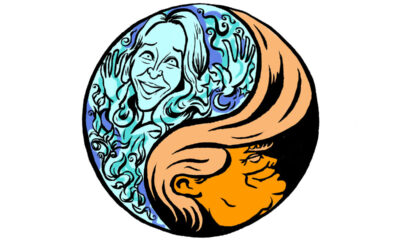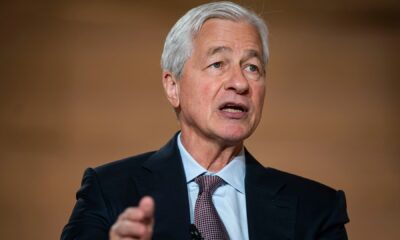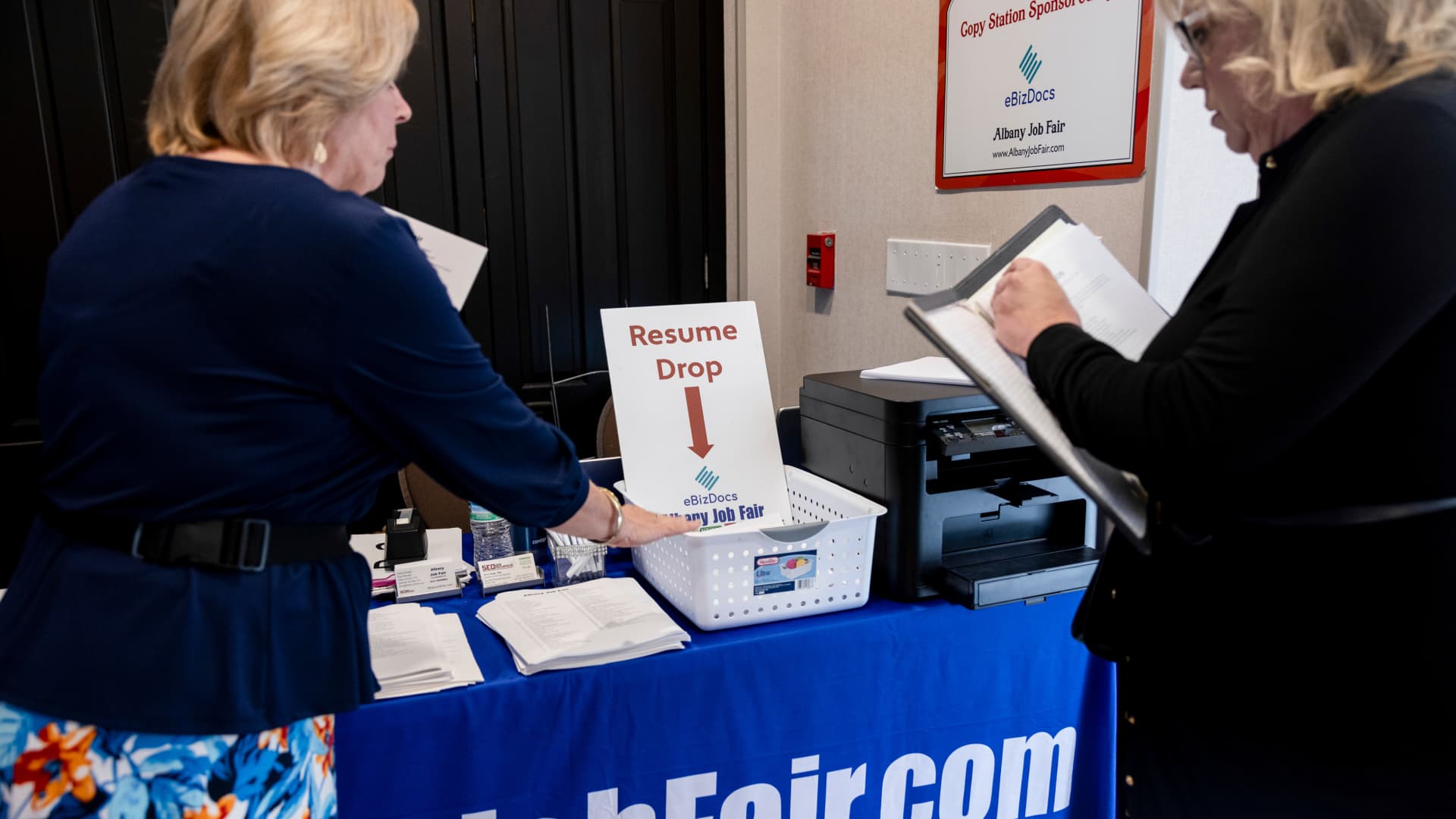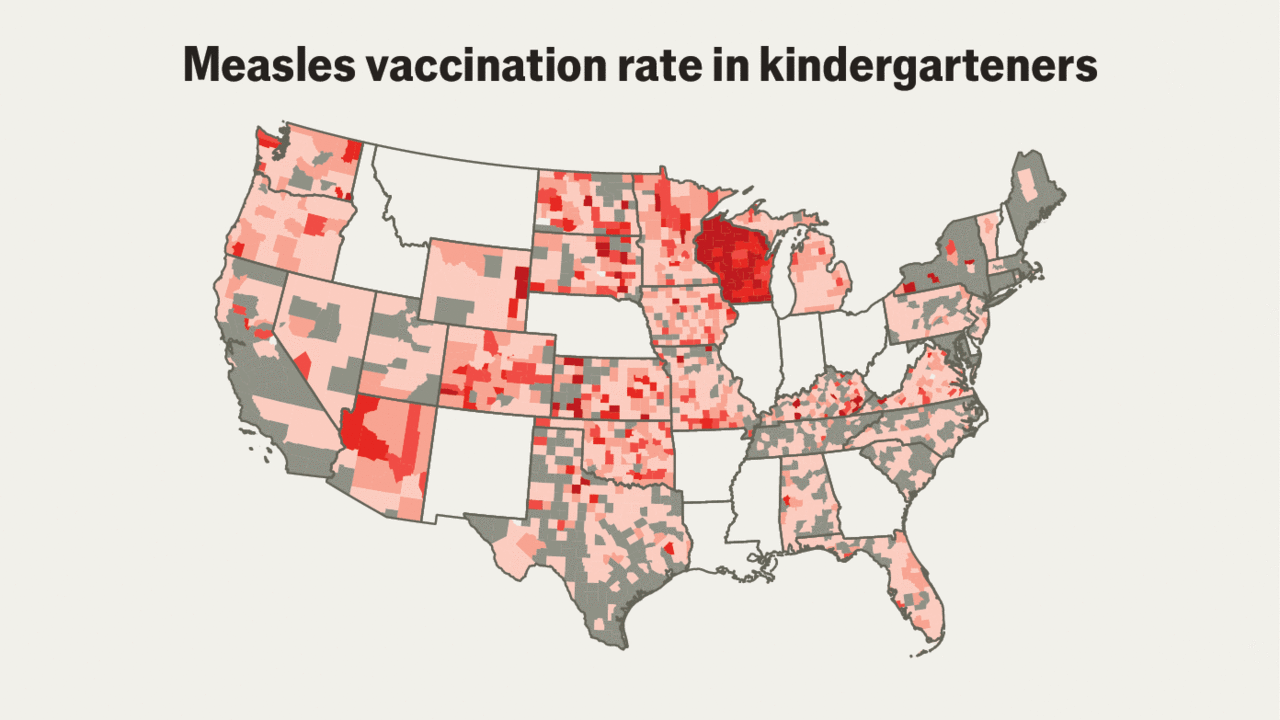Attendees at the Albany Job Fair in Latham, New York, US, on Wednesday, Oct. 2, 2024.
Angus Mordant | Bloomberg | Getty Images
September’s jobs picture is expected to look a lot like August’s — a gradual slowdown in hiring, a modest increase in wages and a labor market that is looking a lot like many policymakers had hoped it would.
Nonfarm payrolls are projected to show growth of 150,000, from 142,000 the month before, with a steady unemployment rate of 4.2%, according to the Dow Jones consensus. On the wage side, the forecast is for a 0.3% monthly gain and a 3.8% increase from a year ago — the annual rate being the same as August.
Should the numbers come in as expected, they would hit close to a sweet spot allowing the Federal Reserve to continue to lower interest rates without a sense of urgency that it could be behind the curve and at risk of causing a recession.
“The jobs market is slowing down and becoming less tight,” said Katie Nixon, chief investment officer at Northern Trust Wealth Management. “The balance of power has shifted back to employers and away from employees, and that certainly will alleviate the wage pressure, which has been a key component of inflation. We’ve been team soft-landing for a while, and this is exactly what a soft landing looks like.”
Of course, there’s always the possibility of a substantial upside or downside surprise to the numbers. Then there are the monthly revisions that have been dramatic at times, causing the Labor Department to overcount hiring by more than 800,000 for the 12-month period through March 2024, adding uncertainty to jobs market analysis.
“While we’re looking at 150,000 jobs added, I would not be surprised if it comes in at 50,000 and I would not be surprised if it comes in at 250,000,” said David Kelly, chief global strategist at JPMorgan Asset Management. “I don’t think people should get too freaked out either way about this number.”
The Bureau of Labor Statistics will release the report at 8:30 a.m. While there will still be one more nonfarm payrolls count before the presidential vote next month, the October report is expected to be distorted by the dock workers’ strike as well as Hurricane Helene — making September the last “clean” report before Election Day.
Looking for clues
Still, markets will in fact be watching the report closely.
Specifically, they’ll be looking for indications as to whether the Fed will be able to loosen policy and lower interest rates in a gradual manner more in keeping with prior easing cycles, or will have to repeat the dramatic half percentage point interest rate cut it implemented in September.
At the same meeting where they approved the reduction, policymakers indicated another half percentage point, or 50 basis points, in cuts before the end of 2024 and another full percentage point in 2025. Markets, though, are pricing in a more aggressive schedule.
“A strong number wouldn’t really change their position,” JPMorgan’s Kelly said. “A weak number could tempt them to another 50 basis points.”
However, Kelly said the Fed is more likely to look at the employment picture as a “mosaic” rather than just an individual data point.
The bigger picture
For the past several months, labor market indicators have been trending lower, though far from falling off a cliff. Manufacturing and services sector surveys have pointed to slower hiring, while Fed Chair Jerome Powell earlier this week characterized the labor market as solid but softening.
Excluding a brief slump at the onset of the Covid pandemic, the last time the monthly hiring rate was the level seen this summer — 3.3% of the labor force in both June and August — was in October 2013 when the unemployment rate was 7.2%, according to Labor Department data.
Job openings also have fallen and pushed the ratio of available positions to unemployed workers down to 1.1 to 1, from 2 to 1 just a couple years ago.
However, a kind of stasis has hit a labor market that not that long ago was wrestling with the “Great Resignation” as workers confident they could find better deals elsewhere left their jobs en masse.
Excluding the pandemic gyrations in 2020, the quits rate hasn’t been lower than its current 1.9% since December 2014, while the separations rate, even including Covid, was last lower than the current 3.1% in December 2012.
“Whatever leverage labor had, [it] has dissipated or just eased as the economy’s normalized,” said Joseph Brusuelas, chief economist at tax consultancy RSM. “So we’re going to have a lot less turnover. We’re seeing it in our business. We’re hearing it from our clients.”
Still, had someone told Brusuelas back during the Covid tumult four years ago that the economy would be adding nearly 150,000 jobs a month now with an unemployment rate in the low 4% range, he said, “I’d have bought you a steak dinner.”

 Economics1 week ago
Economics1 week ago
 Economics1 week ago
Economics1 week ago
 Economics1 week ago
Economics1 week ago
 Economics1 week ago
Economics1 week ago
 Blog Post1 week ago
Blog Post1 week ago
 Economics1 week ago
Economics1 week ago
 Economics7 days ago
Economics7 days ago
 Economics1 week ago
Economics1 week ago













